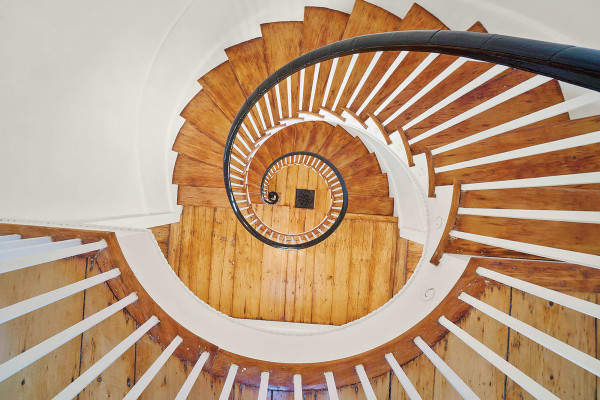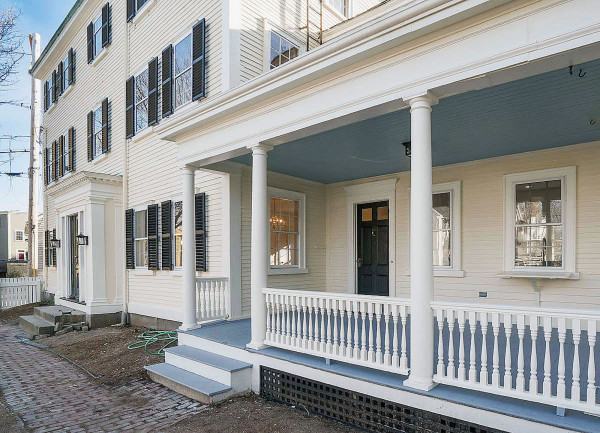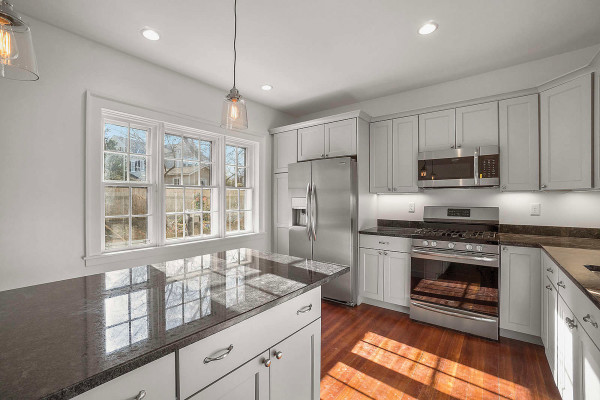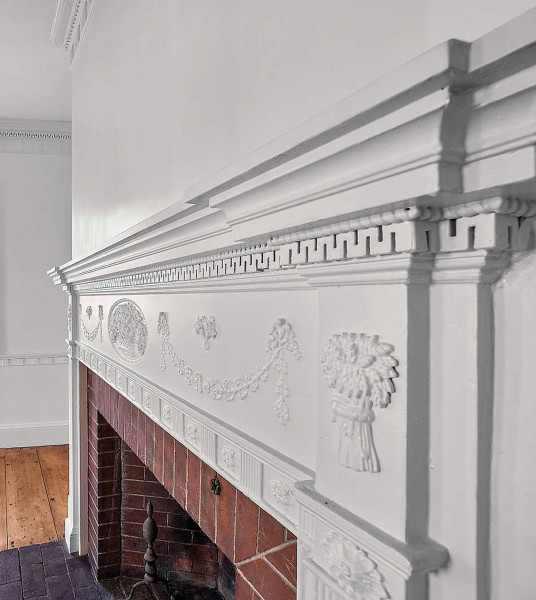Are you thinking of purchasing an old house that’s in an historic district, or eligible for National Register status? Did you know that your investment could qualify for substantial tax credits at both federal and state levels?
Although it’s a somewhat time-consuming and detailed process, applying for historic tax credits is definitely worthwhile for those willing to use a historic building as an income-producing property for a minimum of five years. After that, you the owner can move right in. According to the National Park Service website (the NPS runs the program): “. . . if a portion of a personal residence is used for business, such as an office or a rental apartment, in some instances the amount of rehabilitation costs spent on that portion of the residence may be eligible for the credit.”
Such essential architectural elements as the soaring spiral stair were saved in the 1806 Butman–Waters House in Salem, Massachusetts. Michael Selbst
A successful case in point: Alan November, an old-house lover in the historic seaside town of Marblehead, Massachusetts, went through this process of securing both federal and state tax credits for the 1806 Butman–Waters House in neighboring Salem. Built by the celebrated housewright, architect, and carver Samuel McIntire (1757–1811), the house is located in the heart of Salem’s historic McIntire District, which is on the National Register of Historic Places. It is a Federal-era gem whose essential architecture November wanted to restore.
The first thing he did was to hire the firm of Helen F. Sides, Architect (helensides.com). Sides specializes in old-house “transformations” that value historic architectural details. She not only has experience with the very busy Salem Historical Commission, but also with the historic tax credit process. She put November in touch with Doug Kelleher of Epsilon Associates (epsilonassociates.com), a Massachusetts-based firm that specializes in securing historic tax credits for their clients.
It is, after all, important to restore old buildings not just for posterity’s sake but also—arguably more important—for the economic benefit to the local community. According to Kelleher, “They say that for every dollar invested in the HTC program, $1.85 is invested back into the economy through jobs and other ripple effects.” It is a win–win proposition.
As for the Salem Historic Commission, like most historic commissions, they are appreciative of property owners like Alan November. His approvals went through, for the most part without a hitch. In fact, “The City of Salem Preservation Plan Update” (2015) states: “Encouraging and supporting developers who seek to utilize preservation tax credits for certified rehabilitation projects will be important.”
The late-19th-century porch also needed restoration. Michael Selbst
Although it was costly, Alan November does not regret his decision. “I knew that I was going to have to invest more than the market value of the house. But then I found out about these tax credits . . . that changes the investment from perhaps an emotional decision into a more justifiable decision.” He expects to get back close to 40 percent of rehab costs in combined federal and state tax credits by the end of the application process.
November purchased the Samuel McIntire-built Federal in late 2017. By mid-February 2019, tenants were set to move in. Thus, it took roughly one year to complete the rehabilitation of another important but at-risk old house in Salem. “We’re still in the process and have secured 75 percent of the tax credits possible,” November reported. The combination of a forward-thinking old house lover, a savvy architect, an appreciative historical commission, and the tax credit consultant made it all worth it. Samuel McIntire would approve of the save.
The new kitchen is simple, modern—and rental market-ready. Michael Selbst
What exactly is the Historic Tax Credit
(HTC) program? Basically, at the federal level, an old house that is located in a certified historic district (or is individually listed) can qualify for up to 20 percent in tax credits on qualifying rehabilitation expenditures (QREs) during the restoration/renovation process. If you happen to live in a state that also has its own rehabilitation tax incentive program (most do, except for many Western states), then you can qualify for additional credits. Remember, though: the historic property has to be income producing for at least five years.
The federal HTC program was almost scrapped in 2017 due to the Congressional tax overhaul. Although it is diminished, it remains safe for now, with changes still being studied by experts. The most significant amendment to the program, which is administered by the NPS and the Internal Revenue Service (IRS), is that the payout of the tax credits is now being done over five years instead of the former lump sum at completion of the restoration.
How many states have their own HTC program? As of 2019, according to the National Trust for Historic Preservation, 35 states have their own tax credit programs. In Virginia, for example, homeowners can qualify for up to 25 percent of eligible rehabilitation costs. In Minnesota, it’s 20 percent; Mississippi, 25 percent; and Texas just upped its tax credit potential to 25 percent. Combined with the federal tax program, therefore, homeowners can potentially secure between 40 and 45% in tax credits depending on the state.
Exquisite, Federal-era mantels in the house are verified as being by housewright and carver Samuel McIntire. All are original and have been restored. Michael Selbst
The application process is quite detailed. There are three parts to it and most of the state HTC programs follow the same template as the federal one.
Part 1 covers the significance and appearance of the old building.
Part 2 describes the condition of the building and the planned rehabilitation expenditures. Part 3 involves certifications of completed work, granted as each part of the project is completed and documented. In addition, there is an Amendment Application available for rehabilitation projects that need it.
The process: DIY or Consultant?
- Filling out the application is a very detailed and time-consuming process.
- Pro help might lead to securing more of the available tax credits.
- The consultant has experience with other projects and details of the process.
- The consultant has established relationships with local and state historical commissions.
- The htc program is highly competitive at both the federal and state levels.
If you are going to do it yourself . . .
- Start the process early.
- Contact your SHPO to find out if your old house has NR status or is a good candidate for it.
- Know the application deadlines in your state.
- Do not delay on documenting the pre-rehabilitation conditions—not only with photographs, but also with architectural drawings.
- Do not start any work on the historic building before approvals have been granted by your local historic-district commission.
The main stair is embellished with original, McIntire-carved fretwork.
Preservation Lingo
- HTC Historic Tax Credit program (federal and state levels)
- NR National Register the National Register of Historic Places
- NPS National Park Service
- QRE(s) qualified rehabilitation expenditure(s): all costs from which the HTCs can be claimed.
- SHPO State Historic Preservation Office(r)
- TPC total project cost
Historic Tax Credit Coalition historiccredit.com
How to apply for National Register of Historic Places
designation nps.gov/subjects/nationalregister/how-to-list-a-property.htm
National Register nps.gov/subjects/nationalregister/index.htm
NPS and tax incentives nps.gov/tps/tax-incentives.htm
National Trust for Historic Preservation savingplaces.org/
Tips on hiring consultants and architects thc.texas.gov/public/upload/publications/hiring-preservation-consultant.pdf







